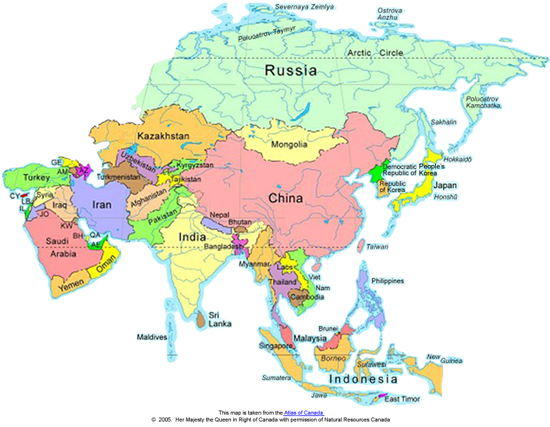
China:
Asian foods have a long standing history that are determined by their natural resources. The common foods of many Asian cultures, including China, are manipulations of the common foods, native of the land. Some of these foods include rice, kao-liang,wheat,soybeans, peanut, malva, Chinese cabbage, turnip, peach plum, apple, date, pear, litchi, orange, pork, beef, dog, chicken, duck, goose, many fishes, red pepper, ginger, garlic, onion and cinnamon.
The Chinese enjoy both raw and cooked foods and believe in a balance of the two for every meal. Food is not as elaborate as it may be in other countries, however it is based more on temperature and exact timing while cooking. Most cooking takes place in water or oil. One type of unique Chinese food is called Dim Sum. Dim Sums are small dishes with lots of flavor. They are traditionally eaten as snacks or at tea time.
Along with Dim Sums, noodles are an integral part of Chinese cuisine. Although it is common to believe that noodles originated in Italy, it was actually the Chinese that invented the noodle. The Chinese believe that long noodles mean long life.
Besides food, drink is an integral part of the Chinese culture. Tea, in particular has a long standing presence in Chinese meals. It is used not only for pure enjoyment, but also medicinally.
India:
The cuisine of India is characterised by its sophisticated and subtle use of many spices and vegetables grown across India and also for the widespread practice of vegetarianism across its society. Considered by some to be one of the world's most diverse cuisines, each family of this cuisine is characterised by a wide assortment of dishes and cooking techniques. As a consequence, Indian cuisine varies from region to region, reflecting the varied demographics of the ethnically diverse Indian subcontinent
India's religious beliefs and culture has played an influential role in the evolution of its cuisine. However, cuisine across India also evolved due to the subcontinent's large-scale cultural interactions with neighboring Persia and , ancient Greece, MongolsWest Asia, making it a unique blend of various cuisines across Asia. The colonial period introduced European cooking styles to India adding to its flexibility and diversity. Indian cuisine has also influenced cuisines across the world, especially those from South East Asia.
~Home~